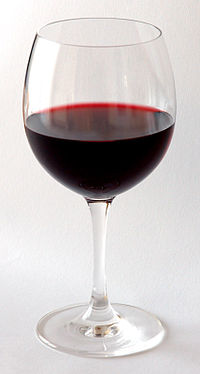
Photo from wikipedia
Purpose The purpose of this paper is to investigate preferences for wine made from hand-harvested grapes, and the interactive effect between this attribute and organic certification. Design/methodology/approach Data were collected… Click to show full abstract
Purpose The purpose of this paper is to investigate preferences for wine made from hand-harvested grapes, and the interactive effect between this attribute and organic certification. Design/methodology/approach Data were collected via an online choice experiment involving a sample of 408 Italian wine consumers. A random parameter logit was performed to estimate consumer preferences for wine attributes: harvest type, organic and the interaction between these. The experiment also includes geographical indications and price. Furthermore, a latent class model (LCM) is performed to investigate taste heterogeneity for the included wine attributes. Findings On average, consumers prefer the wine produced with hand-harvested grapes. The hypothesis of an interaction between organic and hand-harvested attributes is rejected. Using the LCM, the authors identify three segments with significant taste heterogeneity in terms of the magnitude and the sign of the parameters. Moreover, consumer attitudes towards food naturalness differ according to their belonging to the segments. Originality/value The novelty of this article is twofold. First, this study investigates, for the first time, the impact of the hand-harvested method on consumer wine preferences. Second, hand-harvesting and organic have independent values.
Journal Title: British Food Journal
Year Published: 2019
Link to full text (if available)
Share on Social Media: Sign Up to like & get
recommendations!